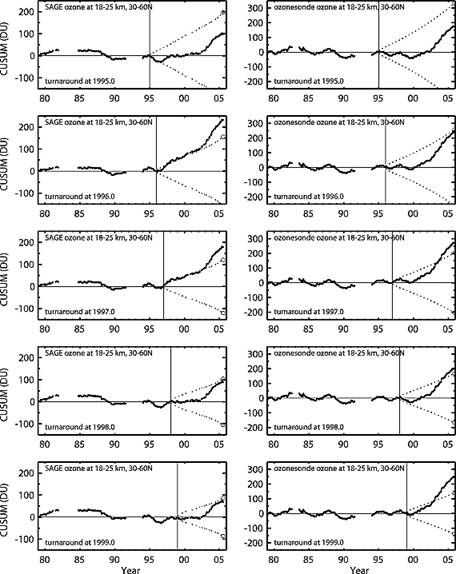Lower Stratospheric
Ozone Recovery
Yang E.-S.,
D. M. Cunnold, R. J. Salawitch, M. P. McCormick, J. Russell III,
J. M. Zawodny, S. Oltmans, M. J. Newchurch (2006), Attribution
of recovery in lower-stratospheric ozone, J. Geophys. Res., 111,
D17309, doi:10.1029/2005JD006371. Full
Text
Since the institution of the Montreal
Protocol and its amendments declining levels of chlorine and bromine
have accounted for half of the ozone recovery from the tropopause to
18km in the Northern Hemisphere Mid-latitudes. Changes in transport
parameters at this level should also be considered when accounting for
the rebound in total column ozone that has been seen since the 9 years
following the Montreal Protocol and its amendments. In order to
accurately project the further effects of the Montreal Protocol a complete
understanding of the changing transport parameters that have not been
accounted for in previous models.

Figure 6. CUSUM calculations
for the (left) SAGE and (right) ozonesonde ozone residuals between
18 and 25 km, 30–60°N. The turnaround points are selected
at 1995.0, 1996.0, 1997.0, 1998.0, and 1999.0 (top to bottom, respectively).
The above figure illustrates the cumulative
sum of ozone in Dobson Units using different model calculations to show
how different ozone rebounds would occur based upon the turnaround year. All
model calculations exceed the 95% confidence interval with the exception
of 1995 as the turnaround year (Top two images).
|